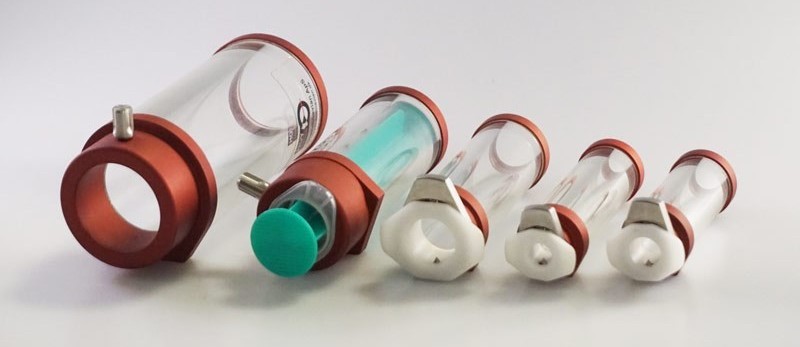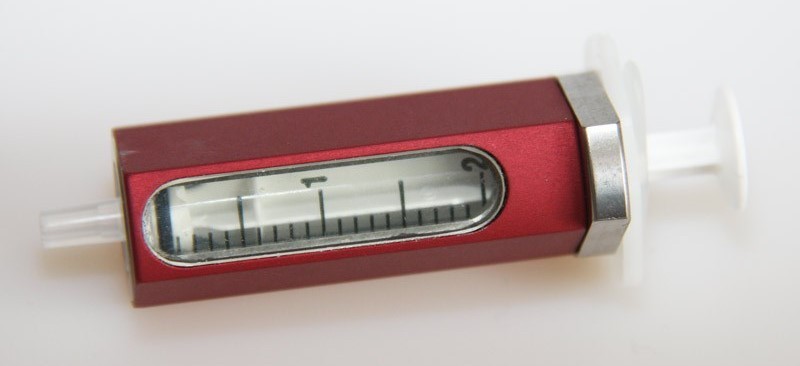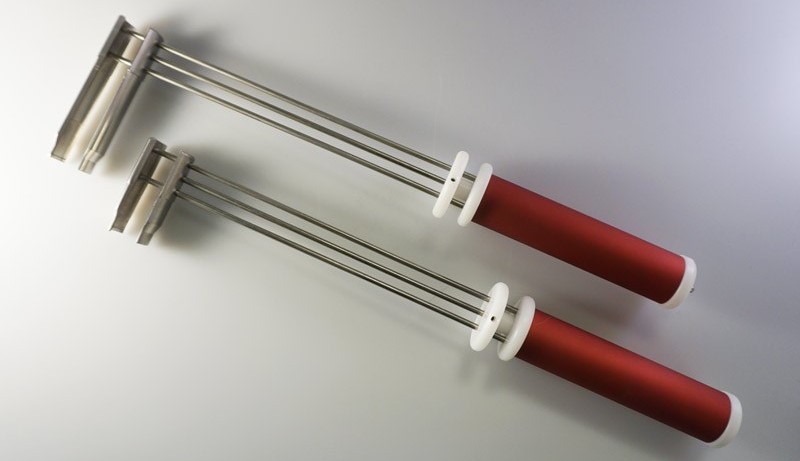Personal radiation protection with Hoy Scandinavian syringe shields
1st December 2022
Derriford Hospital, University Hospitals Plymouth NHS Trust
Derriford Hospital’s Nuclear Medicine Department has been using tungsten and lead glass syringe shields for the administration of radiopharmaceuticals
Hoy Scandinavian syringe shields are ingeniously designed to provide the best possible protection for radiopharmacists and nuclear medicine technicians without compromising visibility or practicality. Nich Carter is an experienced technologist in the Nuclear Medicine Department at Derriford Hospital in Plymouth, where he uses both tungsten and the 100% lead glass syringe shields for the administration of radiotracers.
Nich recently assessed the Hoy syringe shields and shared his thoughts with us.

Hoy 100% lead glass syringe shields
Managing tracer volumes in an MHRA-licensed radiopharmacy
“I’m a Clinical Technologist and the Production Manager at Derriford’s MHRA-licensed radiopharmacy. We manufacture technetium-99m radiopharmaceutical kits, as well as managing stocks of licensed and unlicensed agents.
“We use the Hoy syringe shields for the preparation of technetium radiopharmaceuticals on a daily basis. We use the lead glass shields to more easily see the volume drawn up. Some Nuclear Medicine departments assess the volume of the liquid by weighing it, but at Derriford we assess it visually by reading it off the syringe and double-checking it, which would be very difficult without the lead glass.
“We typically use the tungsten syringe shields in the injection room. They have a small window and we don’t need to see the volumes in those instances."

Hoy tungsten syringe shield
Secure and robust shielding
“We’ve previously used thick glass shields. We still have one now, but they are not as robust as Hoy’s. It has a metal trim around the top, but we found that if it was ever knocked or dropped, the trim became loose, and the glass would scratch, which made it increasingly difficult to read the volume.”
Both the tungsten and lead glass syringe shields are available with two different types of locks; a spring lock that pins the syringe in place and is released by pressing a button, and a twist lock that allows the syringe to be securely twisted into two flanges.
“We use the version with the spring lock,” Nich said. “In my experience, the locking mechanism on most syringe shields will become slack over time through prolonged use, but we haven’t found that to be the case with Hoy, which keeps the syringe secure.”

Hoy radioactive vial tongs
Safe handling of radiopharmaceutical vials
Hoy also manufactures vial tongs in a variety of lengths and angles, which use an innovative pinch mechanism that automatically grips the vial until released.
Nich said, “We have three Hoy tongs; one in the isolator, one outside the isolator for the kits we have to shake after they’ve been manufactured, and one to extract the kits. With conventional tongs, you have to tip the tungsten shield to expose the top of the vial and try and grab it. With Hoy tongs, they’re designed to fit around the cap and top of the vial inside of the shield. You can just pick the vial out of the shield, they’re brilliant.”
Find out more
You can learn more about Hoy’s syringe shields by clicking the button below to request a guided demonstration with a product specialist.